May. 20, 2024
In recent years, more and more people have chosen to live off-grid to reconnect with nature, family, and personal freedom. This shift emphasizes autonomy, sustainability, and environmental connectedness, especially as renewable technologies such as solar power advance, making them more feasible and attractive. Off-grid living involves energy independence and self-sufficiency in food, water, waste disposal, and housing, and although challenging, brings a deep sense of satisfaction and accomplishment.
This blog will serve as a comprehensive guide to help you understand the complexities of off-grid living, address key questions, and provide insights for a successful transition. Embracing off-grid living requires prioritizing sustainability, self-reliance, and harmony with nature, resulting in a truly transformative experience.
Off-grid living is adapting to a simpler or more natural lifestyle by becoming energy-independent and self-sufficient, away from dependence on public utilities. Technically speaking, off-grid living means not relying on utility resources such as electricity, water, gas, etc., and may include self-sufficient food and waste disposal systems. This lifestyle emphasizes reducing dependence on traditional utilities and encourages people to grow food and process resources independently.
While off-grid living sounds dreamy, it actually requires significant cost and effort, including acquiring land and a place to live. However, for those who seek freedom, nature, and family connection, off-grid living offers an ideal way to escape the chaos of city life and achieve a sustainable, self-sufficient lifestyle.
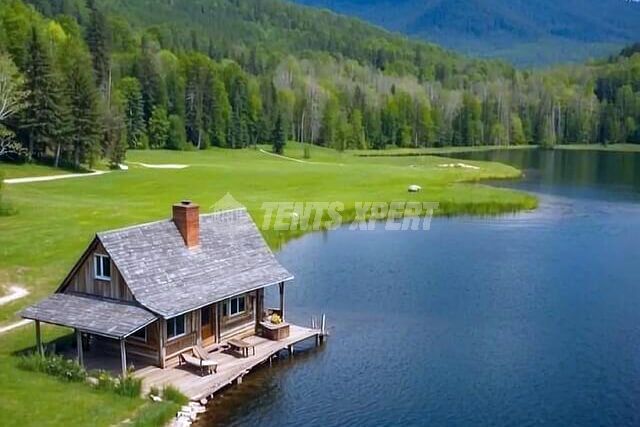
Living off the grid has many advantages:
Low carbon footprint and sustainability: Relying on renewable energy sources, such as solar and wind power, and reducing the use of non-renewable energy sources helps reduce your carbon footprint and achieve a sustainable lifestyle. Removing dependence on the power grid prevents disruptions caused by power outages and ensures stability in life.
Reduces stress and anxiety: Connecting with nature can reduce stress and anxiety and promote mental and physical health.
Independence: Live independently without dependence on government services or utilities. Learning to manage renewable energy, conserve water and other survival skills such as surviving without utilities can build confidence and self-sufficiency.
Minimalism: Simplifying your life and possessions, choosing renewable energy sources, saving money on utility bills, reducing costs associated with energy, food and other consumption, bringing a greater sense of accomplishment and purpose.
Peace and Seclusion: Offering the opportunity to live in a remote area, to be more immersed in nature, away from the hustle and bustle of the urban environment, to enjoy peace and tranquility and appreciate the beauty of the surrounding environment.
There are also some disadvantages to living off the grid:
High initial costs: The high initial investment required to set up energy, water and waste systems can be a barrier to entry into off-grid living.
A lot of work involved: Living off-grid requires a lot of work, including maintaining infrastructure such as electricity and water, which requires skills and knowledge.
Limited resources: In some areas, off-grid living may limit access to certain resources, such as freshwater sources or medical facilities, making life more inconvenient.
Weather Dependence: Weather conditions may affect the efficiency of solar or wind power systems and thus the stability of energy supply.
Higher Maintenance Requirements: Off-grid living requires more maintenance of waste management, water collection and electrical systems, adding to the complexity and workload of life.
Limited connectivity: In isolated off-grid environments, access to the internet and other modern conveniences may be very limited or non-existent, making access to information and services more difficult.
Limited convenience: Living off the grid can make accessing food, medical care, and other services more difficult, requiring more preparation and effort to get the convenience you need.
Social Isolation: Living off-grid can lead to social isolation, making personal contact with society more limited and requiring consideration of whether less human interaction is acceptable.
Off-grid living is the choice to adapt to a simpler or more natural lifestyle by becoming energy-independent and self-sufficient, away from dependence on public utilities. Technically speaking, off-grid living means not relying on utility resources such as electricity, water, gas, etc., and may include self-sufficient food and waste disposal systems. This lifestyle emphasizes reducing dependence on traditional utilities and encourages people to grow food and process resources independently.
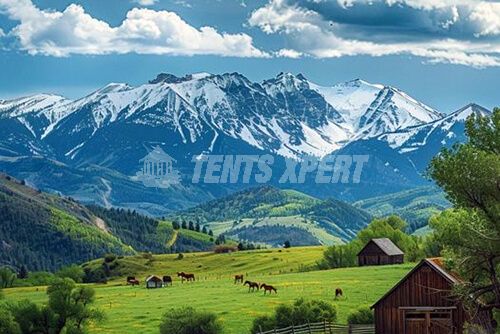
Overall, the overall cost of off-grid living can range from tens to hundreds of thousands of dollars, depending on the level of self-sufficiency required, the availability of resources and infrastructure in the area, and the individual's desire for comfort and modern living. need. Although the initial investment may be higher, the rewards of energy saving, environmental protection, and self-sufficiency brought by off-grid living can continue to reduce the cost of living.
The cost of off-grid living mainly considers the following factors:
Land: The cost of purchasing land will vary based on location, size and accessibility.
Infrastructure: Including building or installing infrastructure such as water wells, septic systems, composting toilets, etc., costs can range from a few thousand dollars to tens of thousands of dollars.
Energy Systems: Prices for energy-related equipment such as solar panels, wind turbines, batteries, charge controllers, etc. vary based on size and quality, with costs ranging from a few thousand dollars to tens of thousands of dollars.
Water Systems: The cost of installing a well, rainwater harvesting system, or other water collection and purification technology also varies based on location and needs, ranging from a few hundred dollars to a few thousand dollars.
Construction Cost: Basic structural costs for a DIY tiny house project can range from $10,000 to $20,000, and manufactured and mobile homes can start between $30,000 and $60,000.
Choosing a location suitable for off-grid living requires a combination of factors such as location, land area, climatic conditions, regulatory requirements and financial viability to ensure you can achieve sustainable, comfortable and satisfying off-grid living. Factors you need to consider include:
Natural Resources and Land Use Restrictions: Make sure the land has adequate natural resources, such as soil, water, trees and open space, to support your living needs. Also, avoid purchasing wetlands or land prone to flooding.
Water and Sun Exposure: Choosing a location close to a water source and getting adequate sunlight is crucial. The water source can be a well, spring, creek or river, while adequate sunlight is beneficial to the efficiency of the solar power system.
Land Area: Everyone’s needs and goals are different, and so will the amount of land required for off-grid living. Some people may be content with a few acres of land, while others may need a larger area for farming and subsistence projects.
Climatic conditions: Suitable climatic conditions for off-grid living are key factors. Considering the impact of climate on planting, solar power generation, etc., it is very important to choose an area with a mild climate and sufficient sunshine.
Building Codes and Zoning Regulations: Check local building codes and zoning regulations to ensure you have the freedom and flexibility in the site you choose to build your home and conduct other activities according to your personal preferences.
Accessibility: While moving away from cities and urban areas can help reduce restrictions and increase freedom, make sure there is adequate access to transportation. Make sure the location you choose has enough roads, trails, or driveways to ensure easy access year-round. Access and use in order to obtain necessary services and resources.
Property taxes and fees: Consider the location’s property taxes and other fees to determine the overall cost of the land and property and whether you can afford them.
Wastewater Treatment: Make sure you consider the needs of a septic system or other wastewater treatment facility to meet local legal requirements and environmental standards.
The types of off-grid houses include the following. Each type of off-grid house has its own unique advantages and disadvantages. It is recommended to conduct in-depth research and understanding before choosing to determine the most suitable option.
Log Cabin
A small, rustic house, usually made of logs stacked horizontally and interlocking at the corners. Log cabins originated from early European and American frontier architecture and are known for their solid structure and natural beauty. They often have simple designs and are known for their sustainability and harmony with the natural environment. They are common and easy to build, suitable for use with local materials. A popular choice for DIY, they are a popular choice for those seeking a traditional, off-grid lifestyle. choose.
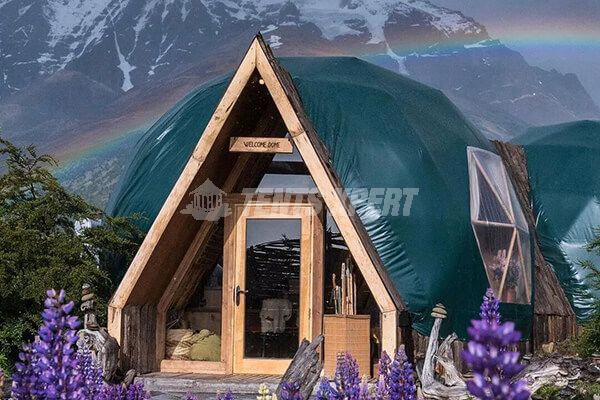
Detached House
A detached house is a stand-alone residential building that is not connected to any other dwelling. Typically located in rural areas, it is designed to be self-contained and often has its own surrounding land, providing more privacy and space. Food can be grown and renewable energy systems such as solar panels or wind turbines can be installed.
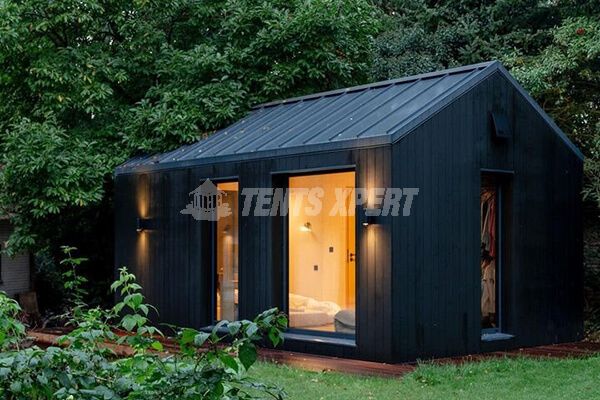
RVs
Available in a variety of sizes and types, including RVs, travel trailers and campers, mobile off-grid living offers the conveniences of a home, complete with solar panels, water and wastewater tanks, and basic kitchen and bathroom facilities for your vacation, road tripping or full-time off-grid living offers a mobile and flexible lifestyle.
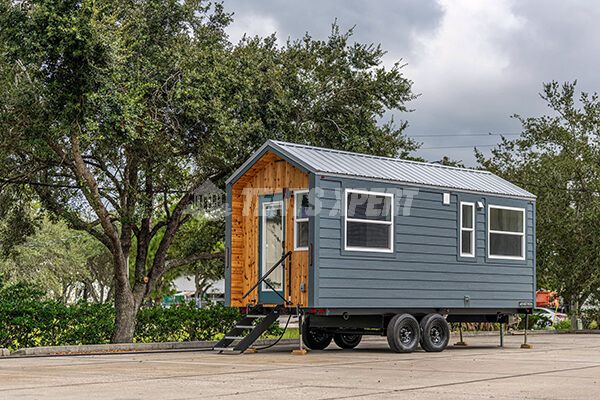
Tiny House
A compact and often mobile dwelling, usually around 100 to 400 square feet in size. Emphasizing minimalism and sustainability, it is designed to maximize space efficiency. Small but well-appointed, it offers all the amenities needed for comfortable living, including sleeping area, kitchen, bathroom and living space for nomadic off-grid living.
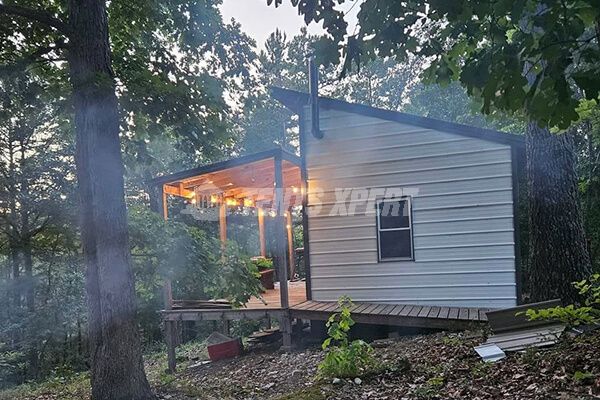
Permanent Glamping Tent
Luxurious and stylish accommodation, a luxurious way to off-grid live outdoors all year round, is designed to provide a comfortable outdoor experience. They are typically made from high-quality, durable materials such as canvas and are designed to withstand harsh environments. These tents are typically larger and more spacious than traditional camping tents and often come with amenities such as comfortable bedding, furniture, lighting, features such as insulation, stoves, and platforms, and sometimes even heating or air conditioning systems. Glamping tents integrate the comfort and convenience of accommodation with the natural outdoor environment, creating a unique, upscale, comfortable, and permanent off-grid living experience.
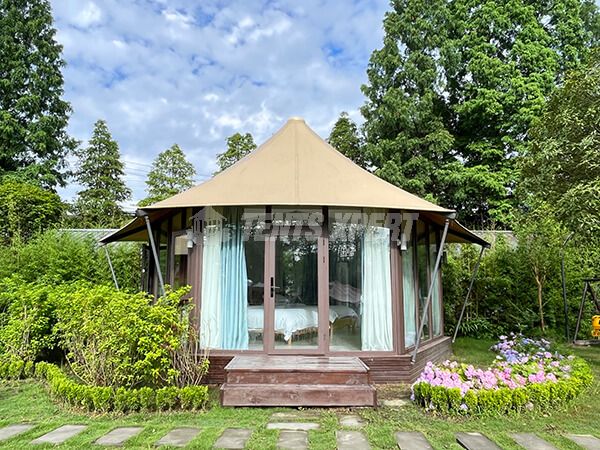
Dome House
An architectural structure characterized by a round, dome-like shape. These houses are known for their unique futuristic appearance and multiple practical advantages. Dome homes are designed to effectively disperse pressure, making them highly resistant to natural disasters such as earthquakes, hurricanes and heavy snowfall. Their aerodynamic shape also reduces air resistance, improving energy efficiency by enhancing natural ventilation and maintaining stable internal temperatures. Dome houses typically require less building materials than traditional rectangular structures, making them a sustainable and cost-effective option for eco-conscious homeowners. High durability and service life of more than 20 years.
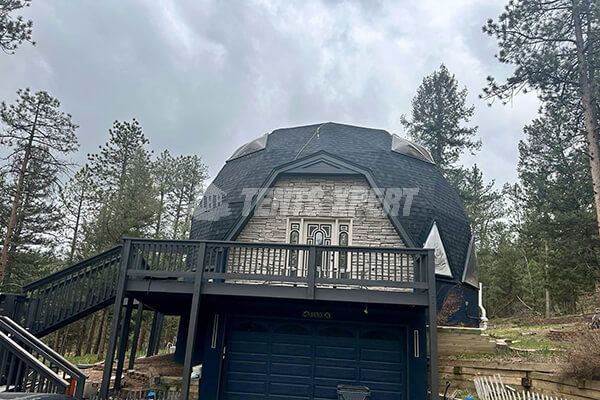
Container Home
A residential structure built using shipping containers. These houses are known for their durability, affordability, and environmental friendliness, and are easy to consider in terms of space utilization and design. Modern or industrial look, usually with a modern and minimalist style. Container homes can be assembled quickly and are suitable for downsizing off-grid living, making them an effective solution for urban and rural housing.
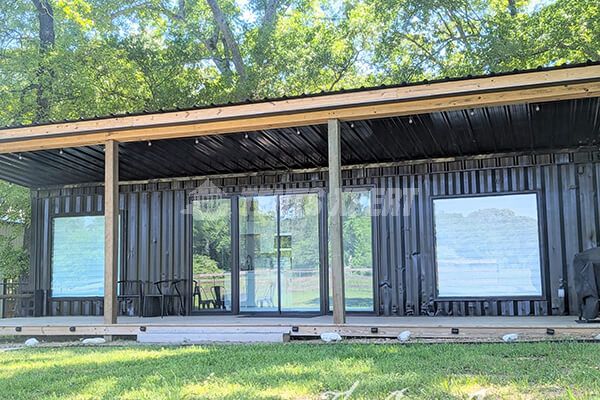
There are several main methods of obtaining electricity while living off-grid, often a combination of which is required to ensure a stable and reliable energy supply. Each off-grid energy source has its pros and cons, and choosing the right combination can ensure the comfort of off-grid living and energy reliability. Before committing to off-grid living, it is recommended to conduct detailed evaluation and experimentation to select the best energy solution based on specific environmental conditions and needs.
Solar Energy Generation
Pros: Solar energy is the most practical off-grid energy source because it requires the fewest special conditions. Suitable for most places as long as there is a sunny location. Solar energy systems include photovoltaic solar panels, inverters and batteries and are capable of providing large amounts of power for long periods of time with low maintenance requirements.
Cons: High initial cost, especially when powering an entire home, long payback period. Solar energy relies on sunlight and only works when the sun is shining, so it needs to be combined with other energy sources or energy storage systems (such as batteries) to cope with cloudy days and nights.
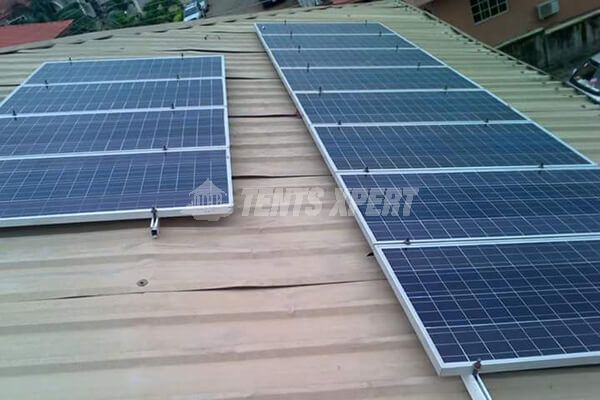
Wind Power
Pros: Wind energy is generally less expensive to install than solar and is suitable for areas with high and consistent wind speeds. Wind power can provide supplemental power when solar energy is insufficient, such as at night.
Cons: High requirements on wind speed and wind conditions, and the wind power in many places is not enough to effectively generate electricity. Wind turbines require large areas of open space, and turbulent or unstable wind directions can also affect power generation efficiency..
Micro-hydropower Generation
Pros: Micro-hydropower can generate the most electricity per unit investment and can provide continuous and stable energy as long as there is a suitable water source. Small hydroelectric dams can provide reliable power to off-grid homes.
Cons:Very limited location, requires a water source running through or close to the property, and water volume and head (distance of vertical drop) must be sufficient.
Comprehensive Application
In order to ensure power stability in an off-grid environment, it is usually necessary to comprehensively utilize the above energy sources.
Combination of solar and wind energy. Relying mainly on solar energy during the day when the sun is shining, wind power can provide supplementary power at night or when it is cloudy.
Combination of solar and micro-hydropower. Where there is a water source, hydropower can provide continuous power, while solar power replenishes it during the day.
Energy storage systems. No matter which energy source is used, energy storage systems (such as batteries) are essential to store excess electricity in case of emergency.
Backup Power
Diesel generator or gasoline generator: Although it is not a renewable energy source, it can be used as an emergency backup power source to provide stable power during long periods of cloudy weather, no wind, or insufficient water.
In off-grid living, access to water requires the establishment of reliable and sustainable water source, treatment, transportation and storage systems. By assessing available water sources and implementing appropriate systems, you can ensure a reliable and sustainable water supply for off-grid living. There are mainly the following ways:
Wells
Reliable but expensive; drilling costs more than $5,000, depending on depth. Wells need to be drilled and equipped with a pump system (solar, manual or electric) and water quality testing, which requires regular testing and maintenance.
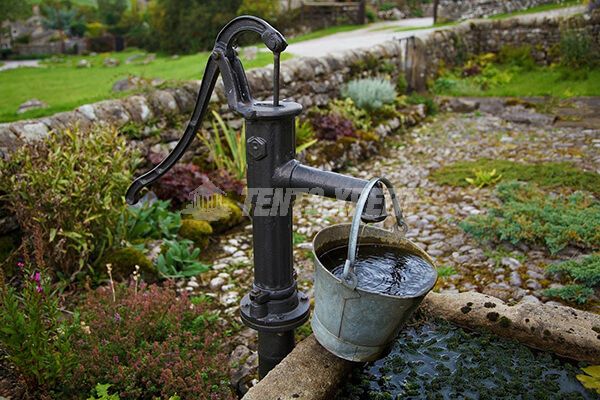
Spring Water
Rare, but reliable if available. You should always confirm that it is safe to drink before using, boiling or handling it. These off-grids can collect water manually by hand or build diversion channels or canals to direct water to storage tanks.
Rainwater Catchment
Ideal if no other source is available; involves collecting rainwater from the roof space and storing it in a cistern or cistern.
Additionally, you'll need a proper pipe and pump system to move water from the source to your home. Install gutters, downspouts and storage tanks to ensure adequate storage capacity is maintained during periods of low rainfall or pump maintenance. Set up collection and filtration systems that use filtration, UV purification and chemical treatments to ensure the water is safe for drinking and domestic use.
Achieving food self-sufficiency in off-grid living requires a combination of growing, breeding, hunting and preserving methods. Learning and practicing these skills, combined with appropriate preservation techniques, can ensure a continuous food supply in an off-grid environment.
Grow Your Own Food
It requires planning and preparation in advance. A growing space of about 4,000 square feet is enough to support a person for a year. Choose a well-drained site with at least 6 hours of sunshine, and choose crops appropriate to your local climate and soil conditions, including not only vegetables but also fruit trees and berry shrubs to increase food variety.
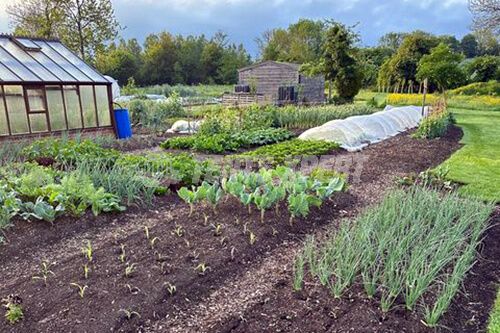
Incorporate Animals
Raising animals is an important part of self-sufficient living. Raising livestock such as chickens, ducks, dairy goats and cows provides meat, milk and eggs, a rich source of protein. Laying hens are an entry-level option that are low maintenance and produce large numbers of eggs, and can be housed in pens or allowed to roam freely around the house. Dairy goats and cows provide dairy products and meat. Although raising costs are higher, dairy goats are smaller and suitable for beginners. In addition, duck is also a good choice because duck eggs are rich in nutrients and duck meat is also a good food source.
Keeping animals requires ensuring that proper care is provided, including adequate feed, water and suitable habitat. At the same time, learning animal health management and basic veterinary care is also essential to ensure the health and productivity of animals.
Hunting And Fishing
Choose a suitable hunting season to obtain meat to supplement your food source. Hunting requires basic hunting skills and a legal hunting license. If you're near a body of water, you can try fishing, which can be done year-round. Fishing provides a steady source of protein.
Procurement And Replenishment
Even when living off the grid, it’s still possible to occasionally go to the grocery store or local market for items you can’t produce yourself. This method can supplement life needs, ensure comprehensive nutrition and necessities, and maintain quality of life.
Food production is a key component of self-sufficient living. But how you preserve your harvest is equally important. There are many methods to choose from. Canning is suitable for preserving fruits, vegetables, meats and soups, and dehydration can dry fruits, vegetables and meats to extend their shelf life. Freezing is an effective way to preserve excess vegetables, meats, and cooked foods, while pickling allows you to make kimchi, pickles, and fermented foods that both preserve food and add flavor.
Ways to dispose of waste in off-grid living primarily include composting toilets, septic systems, and gray water systems. Each method has its pros and cons, choose your best based on personal needs, budget, and local environmental conditions. Proper selection and use of these waste disposal methods enable environmentally friendly and sustainable waste management in off-grid living.
Composting Toilets
Composting toilets are an eco-friendly waste disposal method that converts human waste into compost through a natural process. They are "dry" systems that use no water and use a urine diverter to separate liquids from solids. Solid waste is mixed with carbonaceous materials such as peat moss, coir, sawdust or ash to promote decomposition.
The advantages of composting toilets include eliminating the need for water, thus saving valuable water resources, producing compost that can be used to provide nutrients in gardens, and being a self-contained system, suitable for a variety of off-grid environments, including mobile homes. The disadvantages are that they require regular emptying and maintenance, and may require leaving the house for use. The cost ranges from a few hundred to a few thousand dollars, depending on the model and features.
Additionally, compost is an important way to improve soil fertility. High-quality compost can be made from kitchen scraps, animal manure and garden waste and spread over the soil surface to suppress weeds, conserve moisture and provide nutrients for crops. Make sure the compost is completely broken down and its color should be similar to 70% cocoa chocolate for best results.
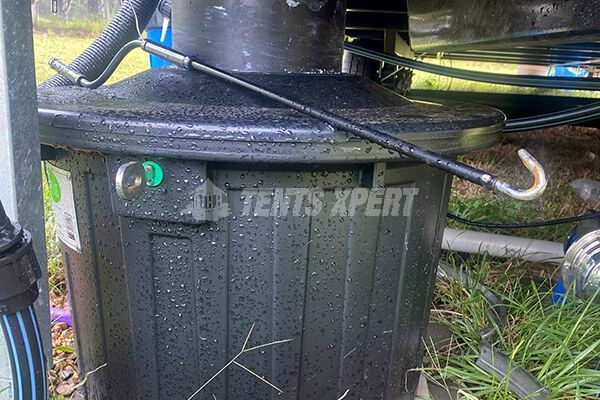
Septic System
Septic systems are a traditional method of wastewater treatment and are widely used in rural areas. Its working principle is that wastewater enters the underground septic tank through pipes, and bacteria decompose the waste. The decomposed wastewater is then discharged into the underground drainage field and finally enters the soil.
The advantages of septic systems include their ability to handle wastewater and solid waste efficiently and are relatively simple to maintain, and can last for years. However, installation costs are higher, typically between $3,000 and $8,000, and regular maintenance is required, which can cost hundreds of dollars per year. Additionally, septic systems require more water because they are usually connected to a standard flush toilet.
Gray Water System
Gray water systems are mainly used to treat wastewater from sinks, bathtubs, washing machines, etc. After simple treatment, this wastewater can be reused for watering gardens or flushing toilets, helping to save clean water resources.
Greywater systems come in a variety of designs and builds, with options to purchase a commercial system and tank or make a complete house system using your own materials. Efficient use of resources can also be achieved by redirecting pipes to certain equipment to use gray water for specific purposes.
Garbage Disposal
Manage different types of waste through effective methods. Organic waste can be composted to provide nutrients for the garden, while non-compostable waste needs to be properly disposed of and cleaned regularly to keep the environment tidy and hygienic. By properly classifying and disposing of waste, effective use of resources can be achieved and the impact on the environment can be reduced.
Living off the grid requires a significant upfront investment of money, time, and energy, and especially if you go the DIY route, it can also require a lot of effort. If you're willing to make the necessary initial investment and learn the skills needed to live off-grid, this lifestyle will lead to more freedom, self-sufficiency, and sustainability.
By educating yourself, developing key skills and adopting a simpler lifestyle, you can create a sustainable and independent life that is more connected to nature and your own abilities. Although there will be difficulties along the way, these are also opportunities to learn and grow, making off-grid living an important part of your life.

Chat Now